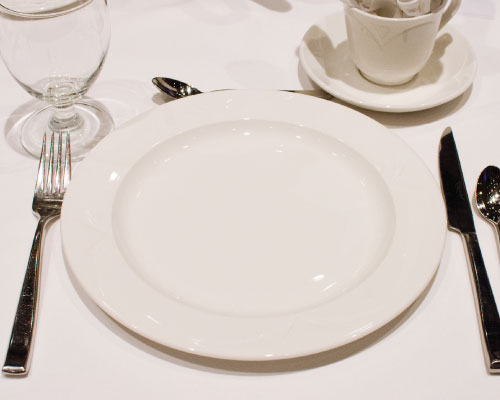- Catalog |
-
My Cart - Quick Order
|
AUI and the Mysterious Origin of the "86"
The Mythic Provenance of a Food Service Staple
April 1, 2016

A couple of weeks ago, we were in the AUI conference room discussing pastries and chocolates, the usual stuff, and we found ourselves stumbling across a fascinating subject: the mysterious origins of the expression 86. As many of you probably know, 86 is a term used in restaurants when an item or ingredient on the menu has run out and can no longer be offered to customers. So, if your chef says “86 the key lime pie,” there ain’t no key lime left.
So here we are in the conference room Googling 86 on our smart phones, and we find a plethora of origin stories. We set out to find the genuine tale, but soon found how impossible it would be. There are TONS of stories surrounding this mysterious term. Today we bring you a conglomeration of theories on the origin of 86, some plausible, and some a little outlandish.
1. Prohibition Problems
One of the more famous theories originates from a famous bar from the Prohibition era in the 1920’s. Chumley’s was a speakeasy that resided at 86 Bedford Street in Greenwich Village, a New York City neighborhood. Apparently, the bar had some corrupt policemen on their payroll, so when a raid was about to happen someone would call the bar and tell them to “86 their customers.” In other words, get rid of them immediately. The customers would leave before the raid, and cops never were the wiser. From that point on, 86 became a bar/restaurant staple when something needed to go. It was even used at a point to signify that rowdy customers needed to be ejected from a bar.
2. Woah There, Cowboy!
There’s a tall tale from the Old West that whiskey only used to come in two different strengths: 100 proof and 86 proof. When the cowboys would get too rowdy after one too many glasses of the good stuff, 100 proof whiskey, the bartenders 86’d them and switched to using the comparatively tame 86 proof.
3. The Great Depression Let Down
In the Great Depression, soup kitchens had standard soup pots that held 85 cups of soup, so the 86th person was out of luck…they were 86’d when the soup ran out. Hopefully there is no merit to this one, because it’s so sad to think of!
4. Post-WWII Naval Disposals
The US Naval Allowance Type (AT) code ascribes numeric codes to equipment. Each numeric code signifies a logistical explanation or purpose for carrying each piece of equipment. Following WWII, a lot of US Naval ships were inspected for equipment that needed to be replaced or upgraded due to the wear and tear that the war had on US Naval ships. The code AT-6, which phonetically resembles the number 86 when spoken aloud, was designated for equipment that needed to be disposed of. That equipment was 86’d, and soon the term began to be used when all different types of things needed to be disposed of, even food in restaurants.
5. The Rhyming Nix
As interesting as some theories are, this is pretty straightforward. The Oxford English Dictionary suggests that the reasoning lies behind the fact that 86 rhymes with nix. The word “nix” is defined by the Oxford English Dictionary as “to put an end to; cancel.”
Do you have any 86 origin stories to share? Email us and let us know at PastryTeam@auifinefoods.com. Or drop a comment on our Facebook and Instagram feeds and let us know your 86 stories!
About the AuthorDanielle Romano graduated from Towson University with a degree in English Literature and Writing. Since then she has put her knowledge of grammar and syntax to good use, working as an intern and freelance editor for a multitude of magazines and online newspapers. Danielle has also worked in the medical field for a number of years, but recently left medicine behind to join AUI as an Executive Assistant; she claims she did it for the chocolate.

